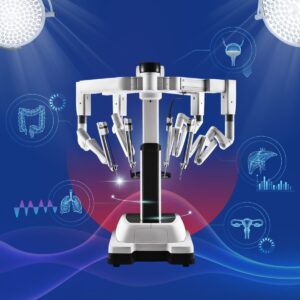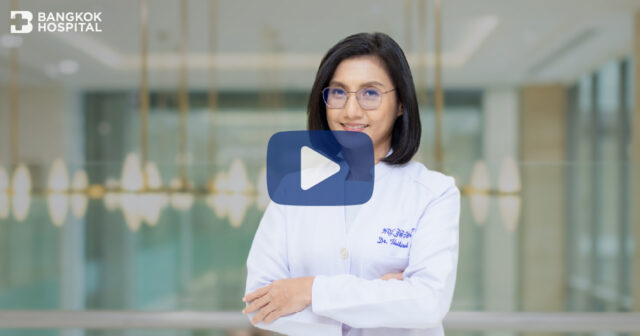Many diseases in the abdominal cavity often start with abdominal pain that seems ordinary, but when severe, may result in surgical treatment. With advanced surgical technology such as laparoscopic surgery not requiring open abdominal incisions like before, getting to a doctor quickly can help one return to a normal life again.
The following 5 abdominal diseases can be treated with 3D endoscopy
1) Ruptured Appendix
‘Appendicitis will cause lower right abdominal pain’ But if the patient’s appendix bursts by the time they see a doctor, diagnosis may be delayed until complications arise because the appendix does not always hurt in the same spot for everyone. Some people’s appendices tuck behind the large intestine, sometimes under the liver, some experience central lower abdominal pain, and others require different diagnostic methods such as computerized tomography to be diagnosed.
Currently, appendectomy through laparoscopic surgery is popular. The surgical instruments are smaller than some pen tips, resulting in smaller surgical wounds, less pain, quicker recovery, and reduced risk of postoperative infection, blood loss, or other complications. However, if the appendix bursts newly, laparoscopic surgery can still be used, if the patient only has pain on the right and not on the left. But if the entire lower abdomen hurts, it should be suspected that there is leakage or spreading of contamination, and doctors often choose to open the abdomen for surgery. The limitation of laparoscopic surgery is that it can’t wash the intestines as well with saline as open surgery due to limited working space Some people do not realize they have appendicitis, take pain relievers, anti-inflammatory drugs, and commonly, take antibiotics themselves, which is not recommended as it may temporarily improve symptoms. The downside is that some people return with more severe disease symptoms, possibly turning into abscesses unresponsive to medication, thus seeking medical help. Therefore, prolonged abdominal pain is not recommended for self-treatment with painkillers.
2) Gallstones
People with gallstones may not exhibit many symptoms, starting with just feeling tightness or bloating 30 minutes after eating, due to the gallbladder contracting to release bile but hampered by the stones. Those who regularly experience such symptoms should check for gallstones with ultrasound. Regardless of size, specialists will primarily observe symptoms; if symptomatic, the body signals that leaving it might lead to complications, it should be removed. In cases where the gallbladder has been neglected for a long time or is severely inflamed, the body tries to help itself by wrapping other organs around the gallbladder to prevent it from bursting or forming a protective fibrosis. The problem is if the main bile duct gets attached too, surgery carries a higher risk of damaging the main bile duct.
Bangkok Hospital’s 2018 statistics for laparoscopic gallstone surgery showed that 93% of patients successfully underwent laparoscopic surgery even in cases of acute inflammation, with 0% injury rate to the main bile duct and postoperative infection in those without acute inflammation. Certainly, surgeons skilled in laparoscopic surgery are key. But there’s more; the operating room has two laparoscopic surgery specialists working as a team. One focuses on the surgical area while the other checks around it, making the work meticulous. This standard is used at Bangkok Hospital for all patients, and the surge in surgical technology, including 4K Ultra High Definition, previously at Full HD level, now surpasses that with clarity up to a 55-inch screen giving surgeons a clear view of internal organs during surgery.
The second technology is 3D, currently used in advanced 3D laparoscopic surgery. The end of the laparoscope has 2 lenses, like having 2 eyes, allowing depth perception of the organs being operated on in 3D, unlike Full HD clarity, 4K cameras are not yet small enough to fit two 4K lenses into a 1cm scope. The critical point is that the camera has high clarity, reducing side effects in cases where the organs are very close together, such as having to carefully separate the gallbladder from the liver and adjacent organs with mere millimeters apart. Using heat or electrosurgery if it accidentally touches the liver, it could bleed. A minor slip of just 2 – 3 millimeters could puncture the gallbladder, risking infection from a gallbladder rupture. Using 3D or 4K technology in laparoscopic surgery helps perform the surgery more effectively.
3) Liver and Pancreas
Treatment of inflamed liver and pancreas with laparoscopic surgery is usually done in cases where tumors, cancer, cysts, or stones block the pancreatic duct.
- Pancreatitis
In cases of pancreatitis caused by gallstones blocking the pancreatic duct, the surgery is done through the mouth like gastrointestinal endoscopy because the upper intestines have an opening to the pancreatic duct. Once the scope is inserted, the stone in the duct can be removed. However, to remove stones in the gallbladder, it’s necessary to make a small incision in the abdomen because the bile duct is twisted and the neck of the duct connecting to the gallbladder is about 2 millimeters narrow, and this is one reason why dissolving gallstones is not popular because stone fragments may block the bile duct, which is more dangerous.
- Liver or Pancreatic Tumors or Cancer
In cases of liver or pancreatic tumors or cancer, laparoscopic surgery allows for a clear view of small blood vessels in the liver, making surgery less bleeding, reducing the risk of injury to surrounding tissue, and patients recover faster, compared with the old days when surgery had to be done through an almost foot-long abdominal incision.
“Current 3D or 4K camera technology offers clearer views than traditional open abdominal surgery because the camera is positioned about 1 centimeter away from the organs and has high magnification power, capable of precisely angling the view, making visible what was previously unseen by doctors.”
4) Hernia
A hernia results from weak muscle walls allowing the intestines to slip out of place, commonly found in the groin, navel, and upper stomach area (this group is called hiatal hernias) or in areas of the abdominal wall previously operated on, showing symptoms like tightness or bulging in the painful spot. People with hiatal hernias have their stomach pushed up into the chest cavity, often experiencing acid reflux due to stomach acid leaking into the esophagus over time, increasing the risk of esophageal cancer.
- Inguinal Hernia
Most common are inguinal hernias, more so in men than women, because in male fetuses the testes are in the abdomen and gradually descent, with the abdominal wall closing over time. However, in some, the closure is incomplete, or even if fully closed, later life may see abnormal collagen repair, leading to protruding intestines. Hernias may slide in and out, sometimes protruding and becoming stuck, unable to be pushed back, cutting off blood supply due to twisting, leading to swelling and eventually gangrene. Hernias can also cause intestines to rot.
Laparoscopic surgery can help by placing a mesh to close the hernia opening, reinforcing strength and preventing recurrence. Normally there are 3 weak spots for inguinal hernias; young men often have hernias at the spot where the spermatic cord exits, with age, muscle weakness in the middle can lead to another hernia, and in women, fat reduction with age can lead to hernia near the blood vessels. Current hernia surgery involves placing a mesh patch behind the problem area and covering potential spots. For hiatal hernias, mesh helps close the issue, but smaller openings may only require stitching.
5) Obesity
Obesity is currently believed to be the cause of metabolic syndrome, leading to high blood pressure, high blood sugar, high triglycerides, low good cholesterol, heart disease, vascular disease, and eventually diabetes due to insulin resistance. Obesity also affects the body’s production of estrogen hormones, especially in those with belly fat, as estrogen is produced from fat. Abnormal estrogen production leads to irregular ovulation, irregular menstruation, fertility issues, and is associated with having multiple ovarian cysts in obesity. Excessive weight, when fat is converted, causes substances that are resistant to insulin, raises blood pressure, hormonal imbalance, and diabetes, deteriorating major blood vessels due to high blood sugar.
- Laparoscopic Gastric Reduction Surgery
Laparoscopic gastric reduction surgery creates a limitation to consumption, not only achieving high weight loss rates, but also significantly improving conditions associated with obesity like fatty liver, type 2 diabetes, high blood pressure, heart and vascular conditions, sleep apnea, menstrual irregularities, and more. Furthermore, ovarian cysts resembling fish eggs, caused by abnormal estrogen hormones, mostly diminish when weight is lost to the standard.
There are 3 standard laparoscopic surgical methods to treat obesity:
- Using silicone to restrict the stomach to hold 30 cc. (successful weight reduction at about 50%, but with a high rate of regaining weight within 5 years).
- Removing parts of the stomach to have a capacity of 150 cc., shaped like a banana. This method cuts out about 80% of the hormone-producing hunger control area. Doctors report less hunger, with a success rate of 60 – 70% weight loss, and improvements in accompanying diseases such as diabetes, blood pressure, sleep apnea, asthma, acid reflux, knee problems.
- Cutting the stomach down to 30 cc. and bypassing the intestines to shorten the absorption path, achieving 70 – 80% weight loss success rate. This method is seen to improve blood pressure and diabetes conditions more than the second method because the intestines contain a set of nerve receptors related to sugar levels, improving diabetic conditions once cut. However, this method involves two joint areas in the intestines. The stomach has good blood circulation, making leaks less likely, but not the intestines, escalating the risk of leaks and complications. Therefore, if there’s no severe illness accompanying obesity such as serious diabetes or other diseases, doctors might just cut the stomach to banana-shape. Yet, if the weight loss target isn’t met and severe associated diseases persist, intestinal bypass may be considered as the next step. This laparoscopic gastric reduction aimed at treating obesity sees weight loss as a byproduct, the real importance being the improvement of comorbid conditions leading to a better quality of life and self-esteem for the patient.
“Laparoscopic surgery is popular and with tools smaller than pen tips, 3D or 4K technology enhances clarity, results in smaller wounds, less pain, quick recovery, and low complication rates.”













